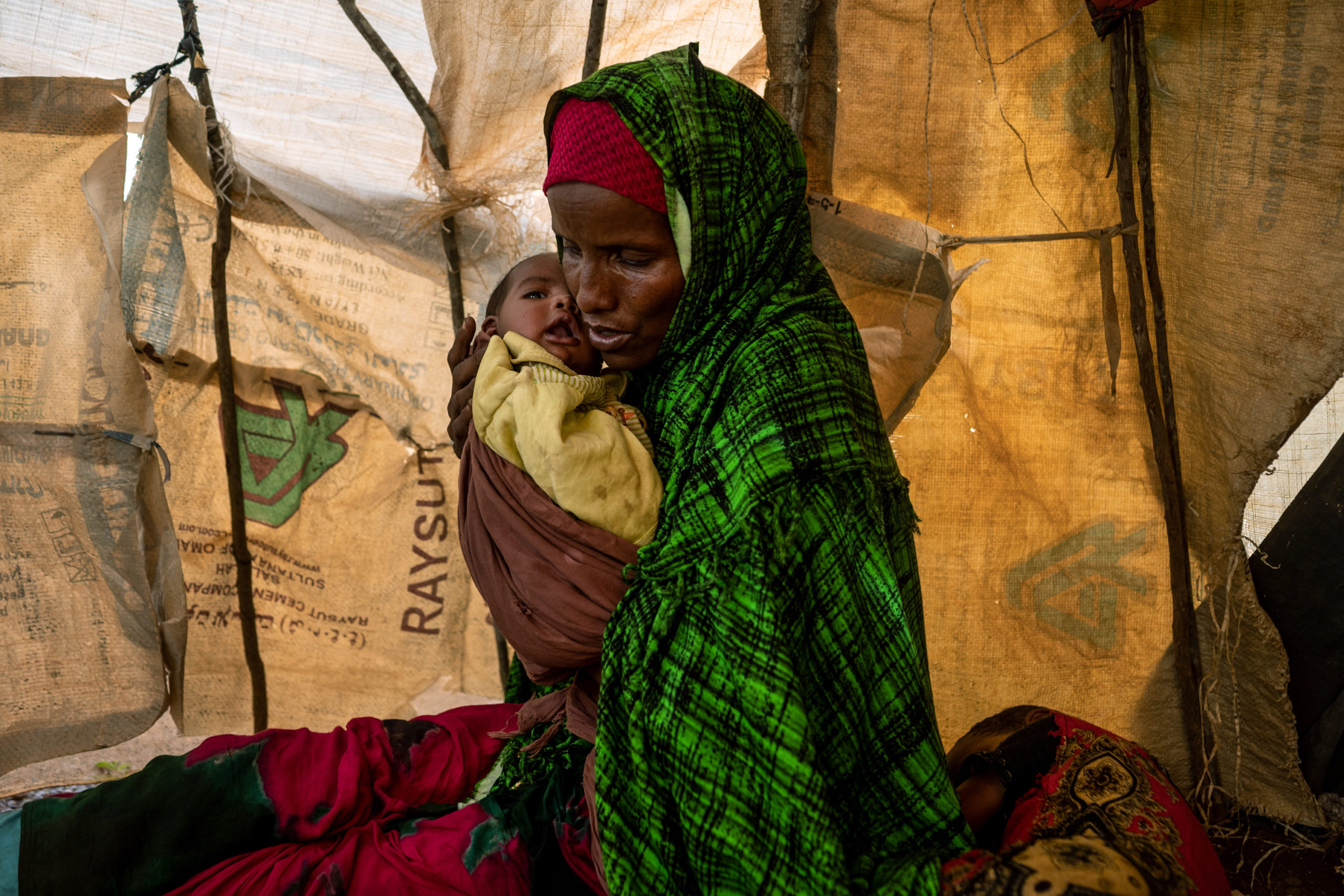I sat next to Faduma in her tent in Baidoa, Somalia, the morning after her three-year-old daughter Hawa died from malnutrition. She caressed and touched two of her remaining children, over and over, in shock. She sang to them, kissed them, talked to them as if they might leave her at any second. Anisa, who is four years old, was sick and lay silently behind her.
Faduma answered our questions but barely acknowledged us. The reporter on assignment with me asked what she wished for. “I’m begging Allah not to take another baby from me,” she told us.
This time with Faduma struck me to my core. I am a mother, and her distress was palpable. There are tens of thousands of tents around Baidoa, Somalia, full of children and families attempting to escape famine. Every tent has a similar story.
Since the beginning of 2021, more than 165,000 refugees have fled to Baidoa looking for help due to Somalia’s worst drought in four decades. Over eight million Somalis are at risk of food insecurity, and at least 1.4 million children have experienced “acute malnutrition,” according to the U.N. Office for the Coordination of Humanitarian Affairs. In Baidoa, I witnessed hospitals filling with starving children suffering from measles, pneumonia, and other diseases that prey on the weak.
After five failed rainy seasons, Somalia hasn’t seen the precipitation needed to support agriculture. When I was there in November, it was weeks into their normal rainy season. Yet, it had only begun to rain — a brief sprinkling once a day, almost every day, for a week. Enough to grow grass on the side of the road, but not enough to sustain a farm for long. Because of this rain, men left their tents and families to return to their farms and attempt to bring them back to life. Drought, the ongoing conflict with terrorist organization Al Shabab, and an ineffective government has made the current famine in Somalia a type of torture for the everyday people who live there. That’s especially true for the mothers left with little to keep their children alive.



